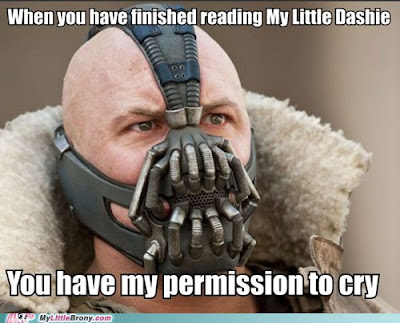Melissa Marr conquered the YA market with the Wicked Lovely series, and she’ll be expanding her horizons on Tuesday, September 4th when Carnival of Souls hits stores.
The first few things that happen in this novel are:
A demon woman sacrifices everything to a witch in the human world, for help protecting her child.
Another, Aya, matches against her ex-fiancee in battle, to further her aspiration to make a statement about women's equality and their right not to be impregnated against their wills.
A teenage girl of human sensibilities, the protected baby demon of the mother above, whines about how her father won't let her date.
An odd juxtaposition, since strong women dominate this story, especially Aya. Which leads us to what I've learned about storytelling.
1. Aya does not steal the show - she demands it and earns it. She comes off the page and grabs you by the throat, but you know it's just a threat. You know that if she were going to kill you, she'd make it rapid, brilliant, bloody. I'm not sure I've ever had the pleasure of fearing, and falling for, such a strong female character. Most plotters characterize though everyday interaction. They often build toward the most difficult decision that character will ever have to make. Marr, however, starts Aya off with this choice. Brutal.
"Aya touched her fingertips to the claws, talons, and teeth she wore like pearls."
2. The threads of the storylines braid in fascinating patterns, then twist into a strong rope toward the end. Some intersections are predictable, others squee-inducing. In a land of three races - humans in one world, demons in another, witches in between - every dynamic develops through these intertwining threads. Much in the captivating tradition of Harry Potter, the characters' feelings shine against hateful societal backdrops -
"a prolonged argument for tolerance." About fifty pages from the end, the humans' and demons' value systems reflected in the characters' conflicts started to feel real in a reality-transcending way. This is the kind of cultural conflict I'd expect to study in a cultural course at school, but delightfully accessible via story.
3. Also like J. K., Marr spoon-feeds the reader nothing. Inference, context clues, detail selections learn you the world before you've known it.
"Hi parents had abandoned him, so he survived as a street scab, too low to even have a caste. Most such demons died; Kaleb hadn't. He'd fought, killed, and endured until he had the strength and power to earn respect on the streets." The social stratification system of the daimon world quickly unveils through character experience.
The intro line: "The man - witch - who'd summoned Selah was nothing like what she'd expected. In truth, he looked no different than many daimons she'd met..." We get hints about the dynamics of all three races in line one: Human, witch, daimon. Boom.
4. Marr writes action with sentence structure that reflects the content; she illuminates the dynamics of fights so clearly, movies would have to resort to shifting-camera slow-mo (techinical terminology here, yo) to create the same effect.
"She let the momentum of his action spin her to face him - and then she shot him. She only got off one shot, but it was a good shot. The bullet pierced his chest, and at such close range, the splatter was enough to make her feel sick."
Line one: Not a word wasted or an action out-of-order. A hyphen marks Mallory's transition from passive to active initiative.
Line two: Slowdown, but we can see where the bullet - and the fight - are heading.
Line three: The bullet completes its path and sends its bloody and emotional ripples.
A seemingly effortless capture of a rapid-fire moment:
"He moved so quickly that the clatter of the revolver hitting the asphalt was simultaneous with a cuff to her head."
5. She uses the "every teenage girl ever" trope in a different way. Mallory appears to be your run-of-the-mill Bellarific protagonist: Innocent to violence and sexuality, clumsy but lacking in any strong passion or dangerous character flaw, passive to the advances of boys as well as to the rules of her overprotective father, obsessing about ways to get her cake and eat it and not hurt anybody about it.
But she evolves as the story goes on. The real Mal shines through cracks in the trope. After all, the trope almost perfectly matches the mold which her father has forced her into for her protection.
If that's too spoilerific, I apologize. It's just fascinating.
What are we doing to our characters when we tropify them? What passions are we suppressing? What flaws are we overlooking, which we could help them overcome? What fearfully beautiful, Aya-like demon are we suppressing?
I stood in my longest line at BEA to get this ARC, and I'm happy I did. I even got a stalker shot of Ms. Marr, see?
























